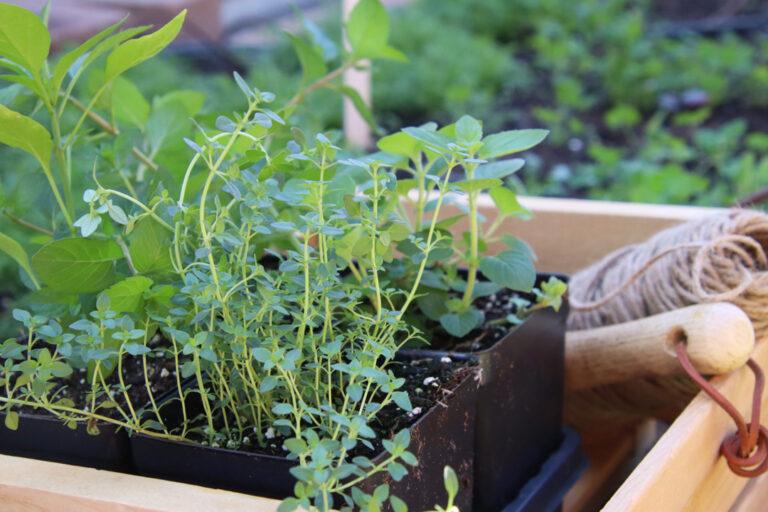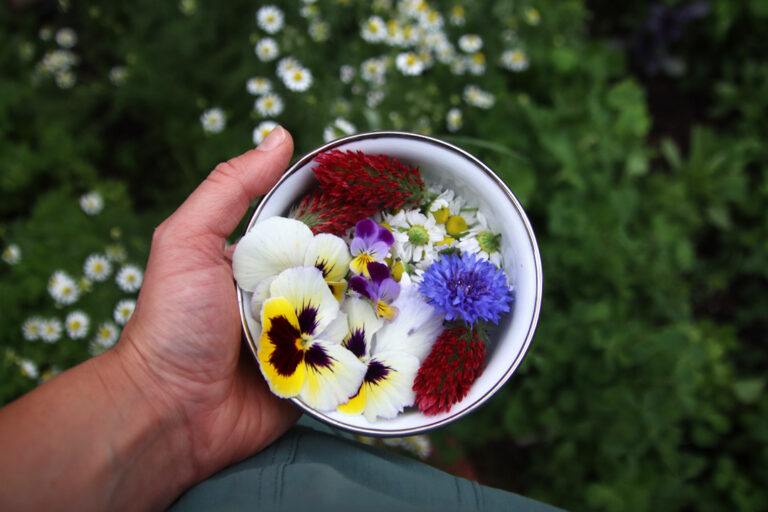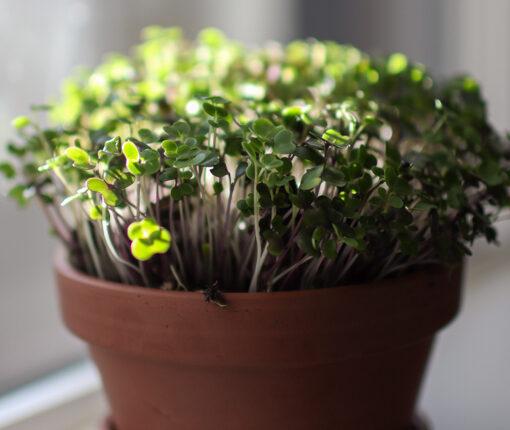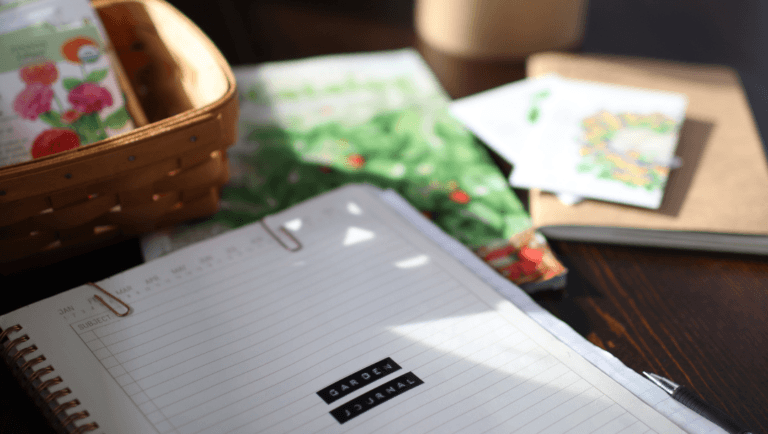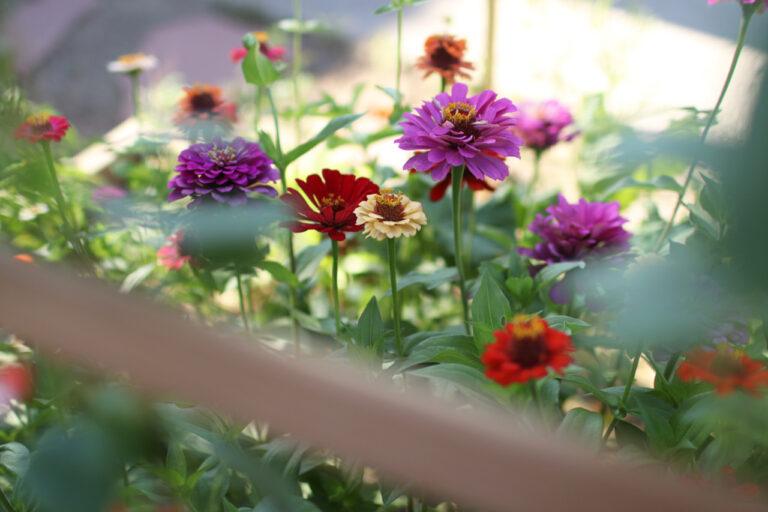21 Vegetables to Plant in a Spring Garden (Ultimate Guide!)
Learn which vegetables and herbs to plant in a spring garden! There are many delicious crops that can be started long before the warm weather arrives. Learn exactly which veggies you can grow in the spring to enjoy fresh, homegrown harvests earlier.
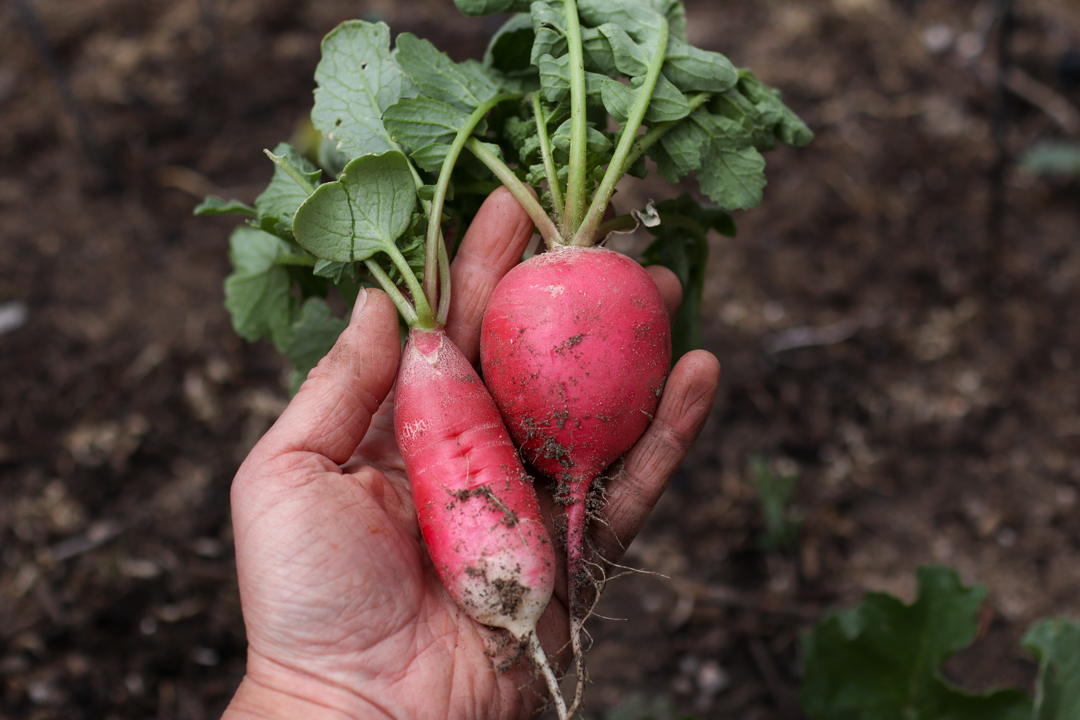
Growing a Spring Garden
It is a common misconception among new gardeners that you have to wait until summer to get started growing. While the exact month you can start gardening varies based on where you live, gardening can start well before the warm weather arrives!
Spring gardens are full of leafy greens, root vegetables, tasty herbs, and more. After a long winter without fresh, homegrown vegetables, growing spring veggies is truly a delight.
Tips for Planting a Spring Garden
- Check the back of your seed packet for planting and spacing notes you may need. I prefer to purchase Botanical Interests seeds because they are loaded with information that makes growing very easy.
- For best results, use a thermometer to monitor soil temperature. This will give you more accurate results than following the calendar. I have had plenty of success not using one, but if you want to have the best garden possible, a thermometer is recommended.
- Always plant your garden in healthy, well-drained soil with plenty of organic matter.
- Know your hardiness zone and last frost date before getting started. Learn more about that in my garden planning guide.
What to Plant in a Spring Garden
These are all of the vegetables that can be planted in a spring garden. Click on a vegetable to learn more or keep scrolling.
- Peas
- Radishes
- Swiss Chard
- Carrots
- Green Onions
- Beets
- Cauliflower
- Broccoli
- Cabbage
- Kale
- Spinach
- Lettuce
- Arugula
- Cilantro
- Mint
- Chives
- Chamomile
- Parsley
- Turnips
- Potatoes
- Rhubarb
Pin it for Later

How to Plan a Spring Garden
The first thing you should do before starting your spring planting is a bit of planning. Identifying your hardiness zone is necessary to know when to start the seeds. Planning the layout, scheduling, and purchasing seeds are also important before getting started. You can click the links to read my full garden planning guide and get a free garden planner!
This post contains affiliate links. If you make a purchase through the links, I will earn a small commission at no cost to you. As an Amazon Associate, I earn from qualifying purchases. Read my full disclosure here.
What to Grow in a Spring Garden
You can find a simple list of my favorite cool-season vegetables for a spring garden here, or keep reading for more information about each of the delicious vegetables you can grow in a spring garden.
Peas
Peas are one of my all-time favorite spring vegetables to grow! Growing your own peas is easy, tasty, and saves a lot of money.
You can grow a variety of peas in the spring garden, including snap peas, snow peas, and shelling peas. Snap peas are my personal favorite. In fact, they rarely make it into the house because we snack on them straight from the vine!
Peas do not tolerate heat well at all, so it’s important to plant them early in the spring in order to get a good harvest before the summer heat arrives. I plant mine about 6 weeks before my average last frost date, sometimes even earlier if we are having a warm spring.
Peas are among the plants that need a trellis to grow up, so plan accordingly. Once the pea shoots are 4-6 inches tall, you will want to “train” them up the trellis by twisting their tendrils onto your trellis. The trellis can be simple, like stakes with jute twine or a premade trellis such as this one. The peas will grow to 3-4 feet tall, so your trellis should be about that tall as well.
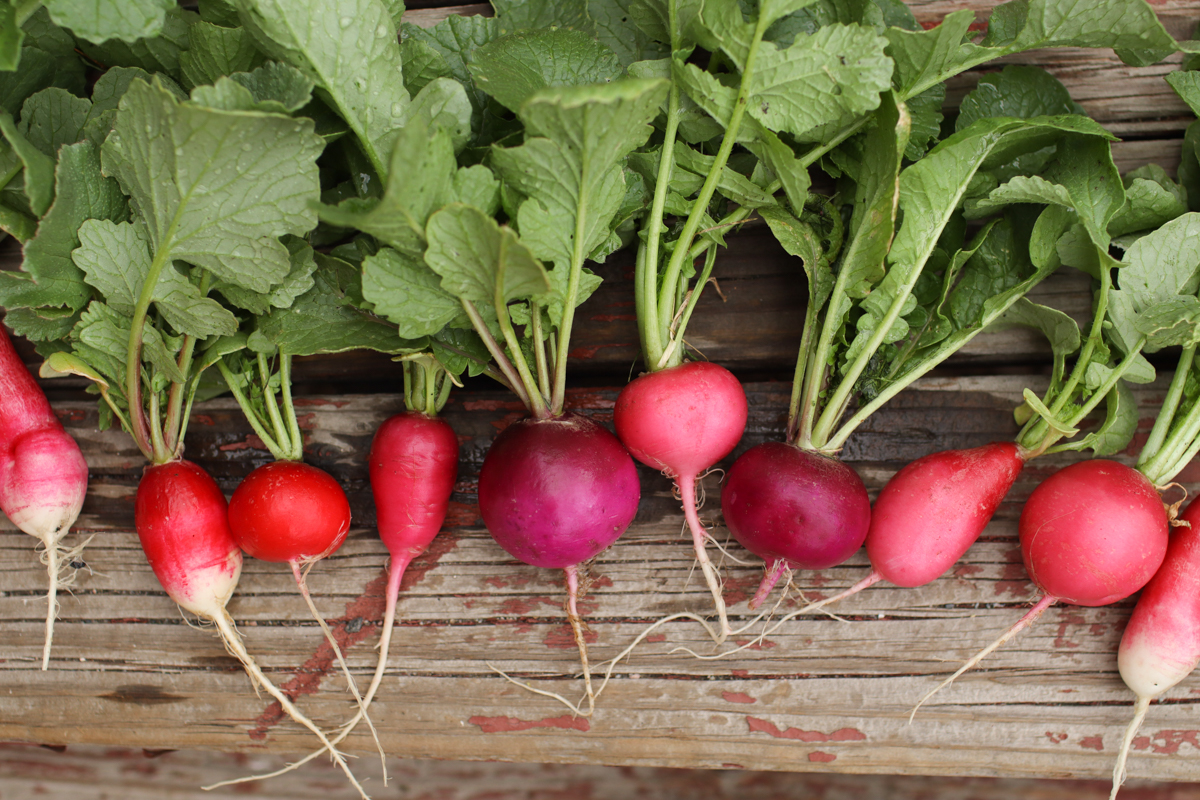
Radishes
Radishes are a fantastic addition to your spring garden because they are very frost-hardy and they grow fast. I always recommend radishes for new gardeners because it is so fun having a harvest in as few as 30 days!
Radishes can be planted 6 weeks before your last frost date. Because they grow so quickly, it’s best to plant them in successive sowings, meaning you plant another batch of seeds every 1-2 weeks in order to have a continual harvest.
When planting radishes, spacing is important. If you plant them closer together, be sure to thin to one seedling every 1-2 inches so your radishes can grow to their full size without running out of space.
Radishes are ready to harvest when they are the size you like; if left too long, they will get woody and may bolt (go to seed) which gives them a very unpleasant texture. If you harvest more radishes than you can eat fresh, you can try pickling them!
Swiss Chard
Swiss chard is a beautiful and nutritious green that is great for eating fresh or cooking. It grows best in cool weather, making it a great addition to the spring garden. Chard doesn’t tolerate frost, however, so it’s a good idea to plant it 2-4 weeks before the last frost and be prepared to cover them if there’s a fluke cold snap.
Chard can be direct sowed in the garden or started indoors to get an earlier harvest. It is a wonderful cut-and-come-again plant, so you will certainly enjoy it for several weeks after planting! Simply tear off the outer leaves and leave the inner leaves to continue growing.
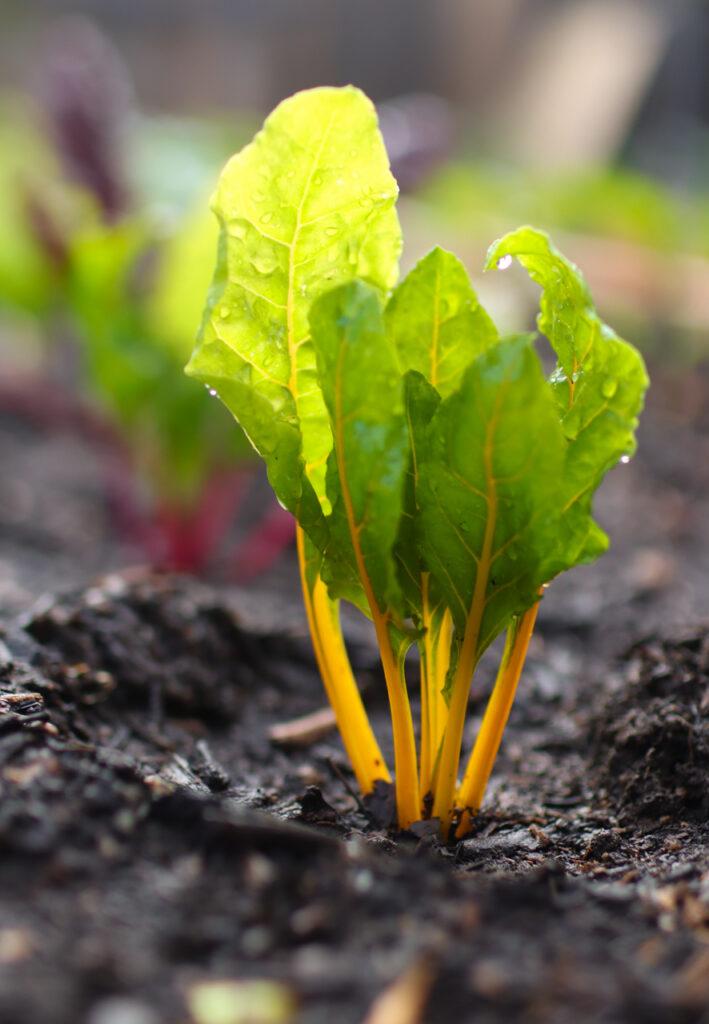
Carrots
Carrots are one of my favorite things to grow because they can grow all through the summer in my zone! They are very frost tolerant; in fact, carrots taste best when harvested during cool weather because they convert starches to sugars to withstand freezing temperatures.
Carrots can be sown about 4 weeks before the last frost in your area and like radishes, they need proper spacing to grow well. These roots also benefit from loose, fertile soil so they can easily grow long.
To know when to harvest your carrots, scoop some of the soil away to reveal the top of the carrot. Harvest them at the size you prefer. I like to plant carrots all through the spring, summer, and fall for a near-constant supply. When it’s time to enjoy your carrots, be sure to save the tops for a delicious carrot top pesto.
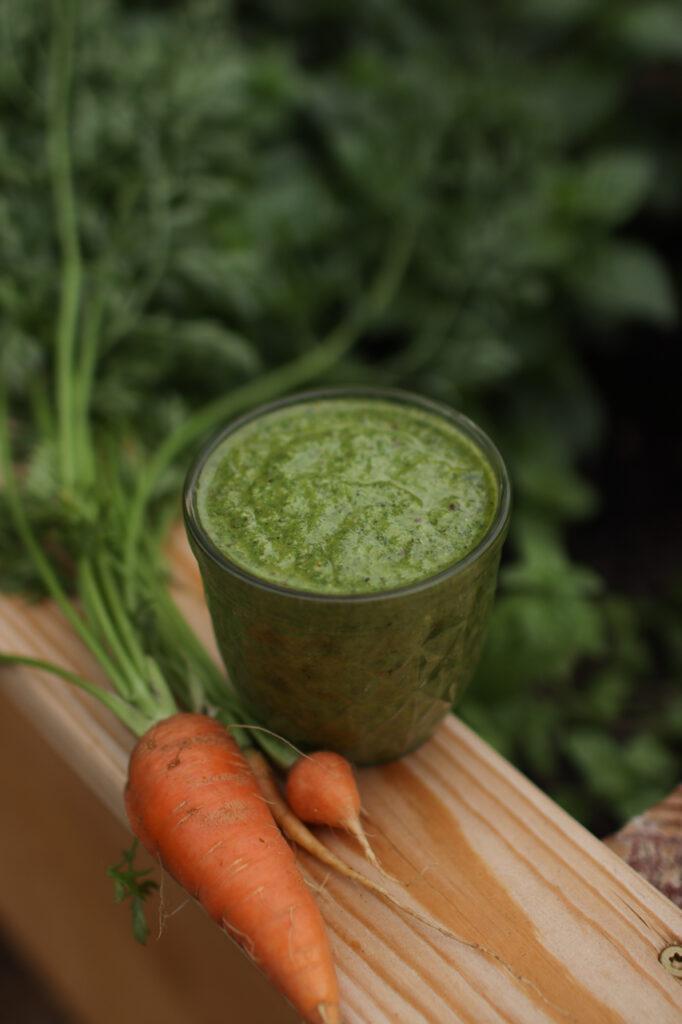
Green Onions
Green onions are one of my all-time favorite spring vegetables and they are very easy to grow! Also called scallions, these tender and flavorful onions can be used in place of regular onions and enjoyed fresh on nearly everything.
Green onions can be successively sown throughout the spring and summer, but they are also a great cut-and-come-again veggie. If you cut your green onions about an inch above the soil rather than pulling them up roots and all, they will regrow. This also means you can plant the bottom two inches of a store-bought green onion in your garden to regrow it into more onions!
Plant your green onion seeds about 6 weeks before your last danger of frost. I like to squeeze these in between other plants to maximize space since they don’t take a lot of room. Be sure they are getting adequate light, though!
Beets
Beets are another fantastic root vegetable that can be planted early in the spring and grown nearly year-round. Beets are a nutritious and easy-to-grow vegetable that offers a tasty root and edible, flavorful greens.
Plant your beet seeds about 4 weeks before your last frost date. Beet seeds are large, tough seeds that benefit from soaking beforehand. For best results in germination, soak them in a shallow container of water overnight before planting. Like all root crops, observe proper spacing to allow them room to grow.
Beets are ready when the tops are pushed out of the garden soil and they are your desired size. Enjoy your beets roasted, steamed, or sauteed!
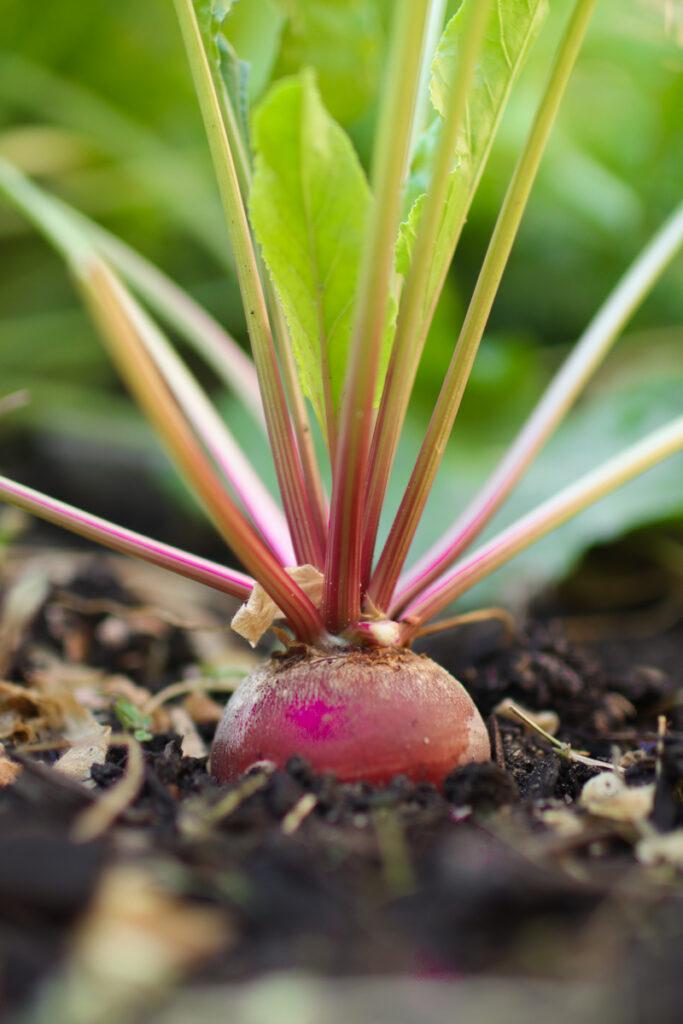
Cauliflower and Broccoli
I can’t get enough of cauliflower or broccoli; they are one of my very favorite vegetables to enjoy cooked and fresh. I also love growing my own in my spring garden!
While cauliflower and broccoli are not ready for harvest until early summer, they should be started in the spring to give them lots of time to grow before the hot days settle in. Once the temperature gets up there in the summer, both of these plants will bolt, or flower.
Both broccoli and cauliflower are best started indoors and transplanted a few weeks before the last frost. You can start your own seeds or purchase young plants from a local nursery. Be sure to harden off your seedlings before planting them in the garden.
Broccoli and cauliflower can be prone to pests, so I recommend giving them very healthy, rich soil, adequate space to grow, and consistent water. Stressed-out plants are more susceptible to pests, so it’s important to keep them healthy. You can also grow flowers to attract beneficial insects and utilize a row cover to keep some of the pests out.
When it’s time to harvest, cut your broccoli and cauliflower heads off the plant with a knife. After the initial harvest, the cauliflower plants can be removed and replaced with summer vegetables. The broccoli plants, however, will continue to grow small broccoli florets so you can get a second crop to enjoy!
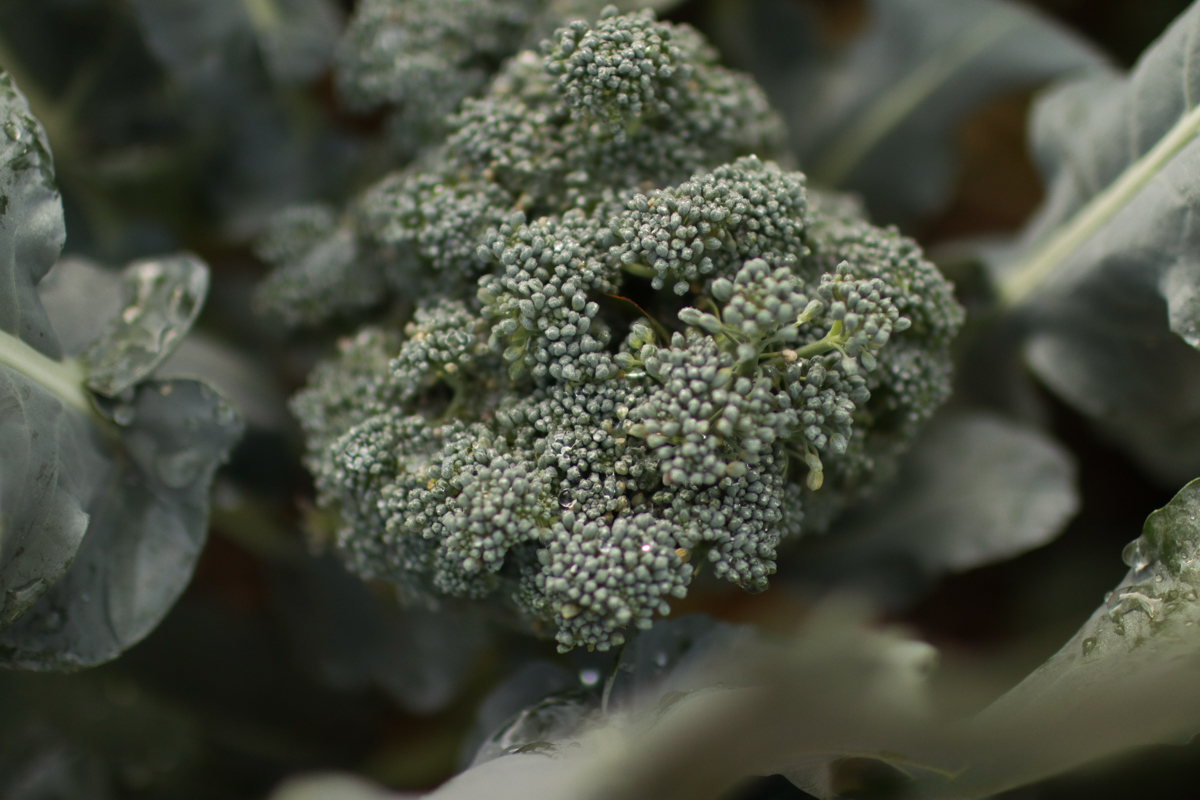
Kale
Kale has a mixed reputation, but I think it is absolutely delicious if prepared properly! There are many different varieties of kale and they all grow well in the cold and the heat. For this reason, I love having kale all through the growing season until winter settles in.
Kale should be direct sown or transplanted 1-2 weeks before the last frost. I like to start them indoors to get a head start, but they also grow well from direct seeding. If you prefer baby kale, you can scatter the seeds throughout the garden and harvest them when they are about 2 inches tall.
Another great thing about kale is it can be harvested again and again. Tear the largest leaves off of the bottom of the kale plant and leave the top leaves to grow for a continual harvest for months!
Tender Leafy Greens
There are many leafy greens that can be grown in a spring garden. It’s the perfect season for fresh salads!
Along with a huge variety of lettuces, arugula and spinach grow well in the spring. In fact, most leafy greens are very sensitive to heat, so enjoy them before summer comes or get a shade cloth to keep them cool.
Leafy greens are a great cut-and-come-again vegetable, so don’t pull them up by the roots. Cut the leaves off at the soil level and the plants will produce more for another harvest.
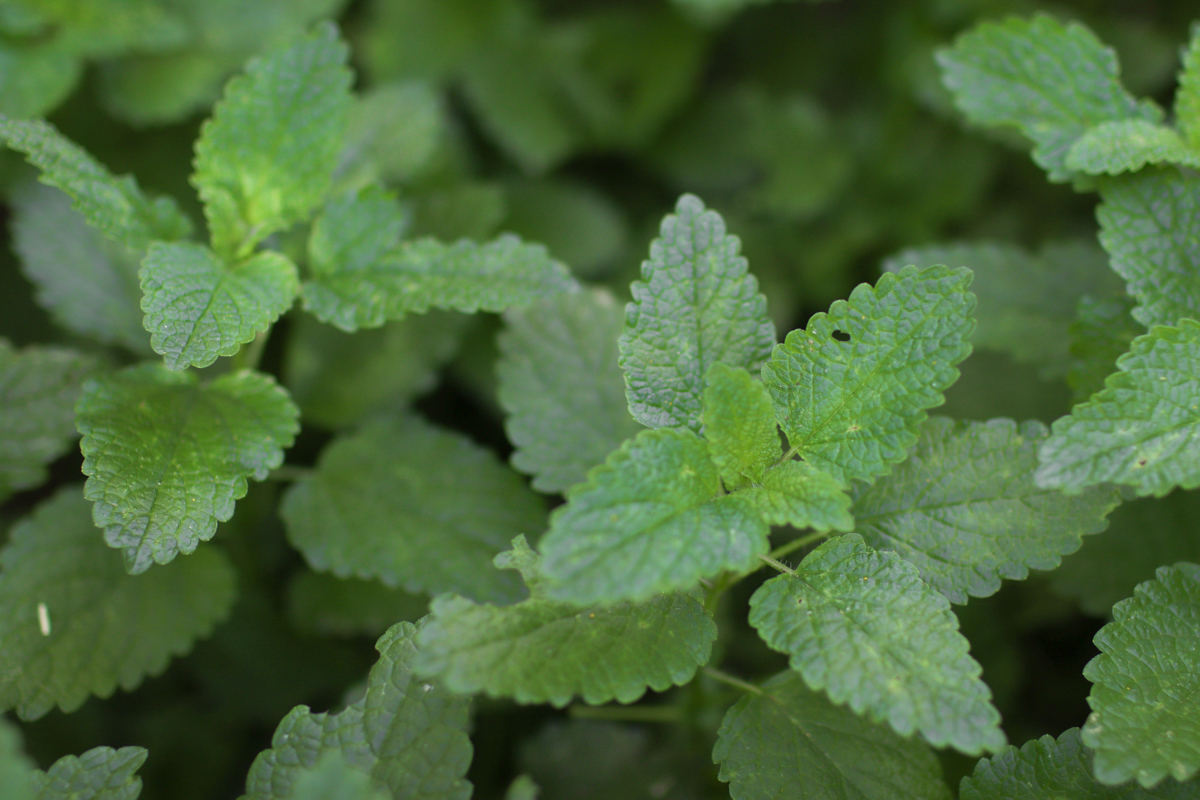
Herbs
Not all herbs can be grown in the spring, but some of my favorite ones can! Chives, parsley, mint, chamomile, and cilantro all grow well before the last frost and into the summer too.
Chives and mint are perennials, meaning they will come back every year but may grow more slowly the first year. Once the plants are established, they will come up on their own as soon as it’s warm enough for a very early harvest! I like to direct seed chives but start mint plants indoors.
Parsley is a biannual, meaning it will come back a second year for an early harvest, then go to seed and die. I love not having to plant it every year! The seeds should be soaked overnight before you plant them to support germination.
Cilantro and chamomile are annuals, so you will have to replant them every year. Chamomile will produce lots of fragrant blooms until the late spring and early summer, then start to die off in the heat. Chamomile blooms can be dried to preserve them.
Cilantro is very sensitive to heat, so I recommend growing plenty in the cool spring months or using a shade cloth to cool it off in the early summer. Scatter your chamomile seeds about 6 weeks before the threat of frost passes and plant cilantro 2 weeks before or start the seeds indoors for a head start.
Herbs are easy to grow and add loads of fresh flavor to your spring meals. They don’t require a lot of space, so you can tuck them into gaps throughout your garden or fill a plentiful herb garden.
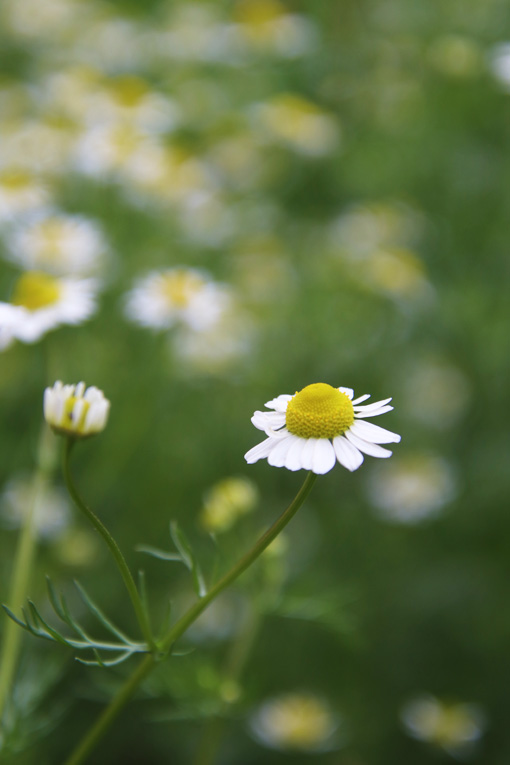
Turnips
Turnips are a delightful, sweet root veggie with a lot of fantastic uses in the kitchen. They are also an easy-to-grow spring crop!
Just like other root vegetables, turnips can be started early, need proper spacing, and can be harvested throughout the spring and summer. I like to direct sow them 4 weeks before my last frost date and plant another succession in a few weeks.
Turnips have a large window within which they can be harvested. Pull them when they are small and tender or wait until they get larger to get more bang for your buck. Enjoy them raw, roasted, or cooked in the same dishes in which you would use potatoes.
Potatoes
Potatoes are possibly the most versatile vegetable and are great for storing throughout the winter. They are also a wonderful hands-off crop that you only need to plant, water, and harvest at the end of the season.
Potatoes should be planted in the spring for a late summer or fall harvest. Purchase seed potatoes (I don’t recommend growing potatoes from the grocery store, though you can grow them if they are organic) online or at your local garden center.
Planting potatoes is quite different from other plants, so I recommend doing a bit of research before getting started. This growing guide from my favorite seed potato farm is a great place to start.
Once you get the planting down, potatoes are easy to grow and they are so fun to harvest!
Cabbage
Cabbage is another of my very favorite vegetables and it is so rewarding to grow yourself! Much like broccoli and cauliflower, this vegetable should be planted in the spring for an early- to mid-summer harvest.
Cabbage plants are best started indoors or purchased from a local nursery. Always harden off your seedlings before planting them in your garden.
Harvest your cabbage when it’s softball size or larger, well-formed, and still dense to the touch. Enjoy it sauteed or made into a gut-healthy sauerkraut!
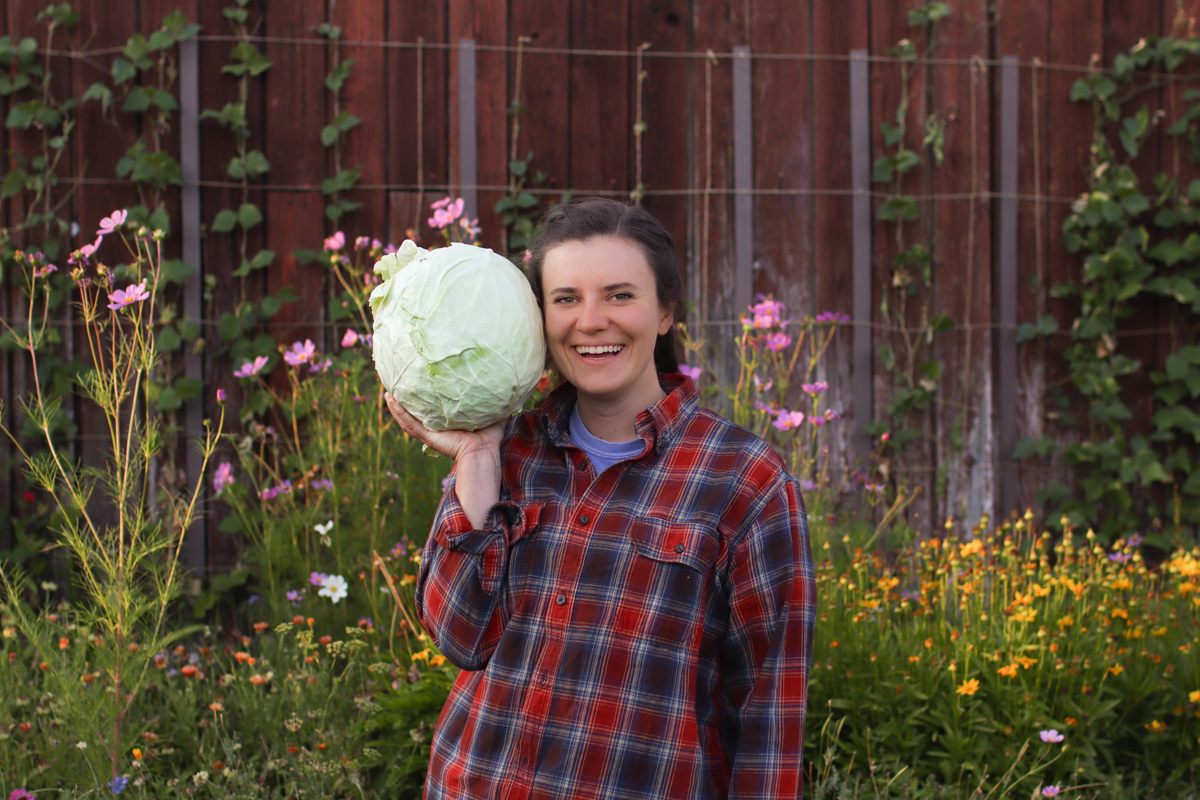
Rhubarb
Rhubarb is a fantastic perennial plant to have in your garden in the spring. As soon as it starts to warm up, the rhubarb will emerge and can be harvested a couple of times throughout the spring.
Rhubarb is delicious in jams, pies, and other sweet treats when mixed with other fruits. It is rather tart by itself but it pairs perfectly with strawberries for a balanced flavor.
Purchase your rhubarb as plants or bare roots online or from a nursery. Rhubarb is an investment because you shouldn’t harvest from it the first year. It is well worth the wait, however, as you will enjoy homegrown rhubarb for years to come!
More Gardening Guides You’ll Love


